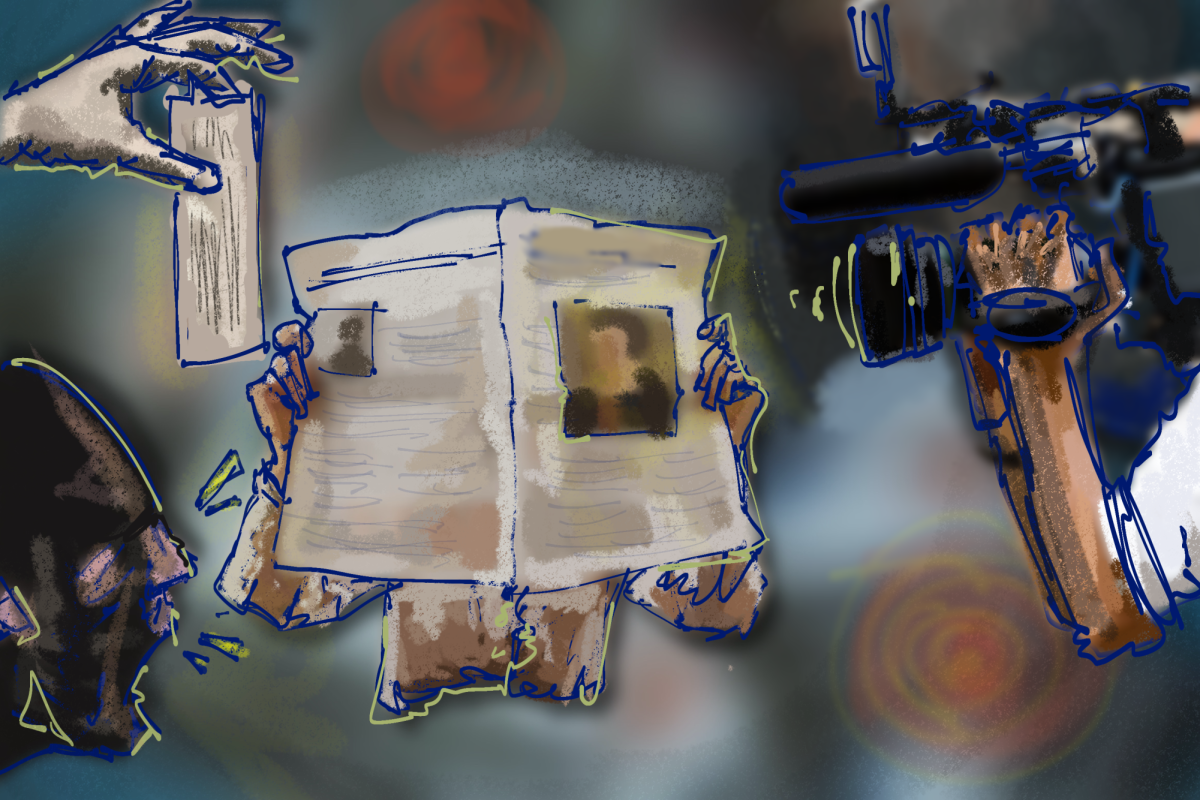Someone in the corridor is listening to an audiobook at double speed fifteen minutes before class starts. Another is using their laptop to scroll through an AI-generated summary. Students on campus are coming up with novel strategies to stay up to date. There’s something strange about the speed and the shortcuts. Technically, we’re still reading, but are we really taking in anything?
It’s simple to feel like you’re always falling behind at an institution as fast-paced as UT. Due to rigorous coursework, employment, internships, and the need to maintain competitiveness, reading has shifted from being about engagement to being about efficiency. It has become a race against the clock. This change can be seen in the way that pupils read as well as in what they read. These days, AI summarizes papers and frequently speeds up lecture videos. It works for some people. For others, depth is sacrificed.
Psychology professor Dr. Lori Holt stated, “After the pandemic, when we had to have a lot of video lectures, I’ve moved in the direction of voluntarily having (online lectures) because I think there’s a benefit to lots of students.”
Aside from helping us finish an assignment, skimming PDFs or entering articles into AI begs the question, “What are we really learning?”
Heaven Legleu, a sophomore in business, stated that she usually reads every word because that’s how she works best. Since I’m certain I’ll miss something crucial, I can’t fully skim through texts.
According to a UCLA study, students may effectively recall material when they view lectures at up to twice the typical speed; however, comprehension starts to deteriorate when the speed is exceeded by two times. When compared to students who watched at slower speeds, those who viewed at 2.5 times the typical speed performed worse on both immediate and delayed tests.
It is undeniable that resources like AI summaries and audiobooks can be beneficial, particularly for students who struggle with studying or have a lot on their plate. They provide efficiency and accessibility, and occasionally they are the sole means of surviving the week. When these tools take the place of real engagement, problems occur.
Word recognition is only one aspect of reading. It entails struggling with ideas, spotting discrepancies, and letting statements stick in your head. Reading involves forming opinions, posing queries, and finding unanticipated connections. These elements are not included in a bullet-point summary.
“I feel like it’s more of a review session when I watch videos at double speed,” Legleu remarked. I have trouble understanding the content, and if I’m not reading it aloud, I’m just listening to someone else talk at me rather than truly understanding it.
When we treat reading as a checked item, we run the risk of flattening the experiences that aid in our growth as students and as humans. This does not imply that we must stop using shortcuts altogether; rather, it calls for us to utilize them more deliberately.
Professors can assist their students by acknowledging the realities of their workloads and encouraging depth over speed by introducing flexibility into their sessions. We might search for chances to slow down as students. Spend a bit more time than is necessary sitting with an idea, and read something slowly. While it’s not necessary for every reading to transform your life, it’s worthwhile to give it a shot occasionally.
Vazquez is from Monterrey, Mexico, and is a sophomore studying journalism.












